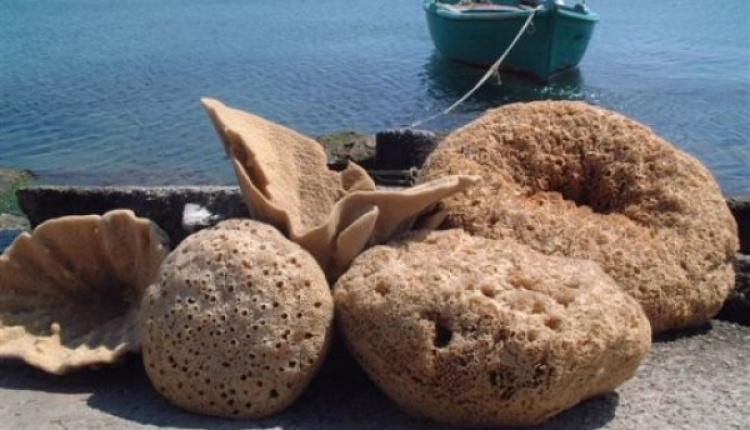For locals, sponge fishing used to be their source of income; a “mission impossible” that only the fittest and bravest could pursue successfully.
The centuries-old tradition in sponge fishing determined the island’s identity and contributed significantly to its financial prosperity. Enterprising local tradesmen sold their valuable harvest in Syros, Nafplio and Constantinople and travelled as far as Odessa, St Petersburg, Moscow, Trieste and the Middle East…
Diving Methods
Historical records of the 1800s help us “dive” into the “travels of life or death” of the daring sponge fishermen who ventured into the open sea and started exploring the sponging grounds early in the springtime, carrying with them only a few provisions and their stamina. These legendary men went “skin diving”, reaching depths of 30 metres, shoved by a heavy skandalopetra i.e. a piece of marble that helped them dive quickly to the bottom. In the autumn, when the sea became too cold for diving, they would return to the island where everyone welcomed them with tears of relief and joy.
Around 1860 a new and revolutionary -for those times- method of diving was invented, called Skafandro or diving suit. The diver’s body was fully covered (the suit was complemented by a helmet, a copper breastplate, shoes and weights on the chest) allowing him to stay on the seabed for much longer. During the dive, a manually operated air pump with pistons would send natural air to the diver’s helmet through a pipe (called markoutsi). Efficient though this method proved to be, it equally proved dangerous, as thousands of deaths and paralyses had been recorded (due to decompression sickness);ignorance of diving rules - concerning in particular the resurfacing phase - was behind it.
To read more, please see visitgreece.gr




